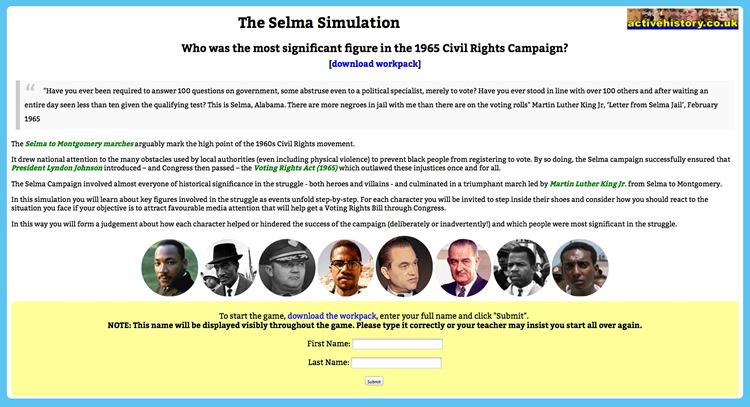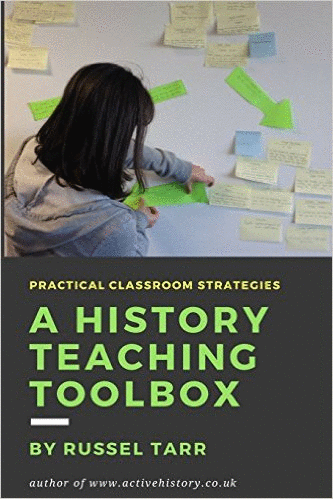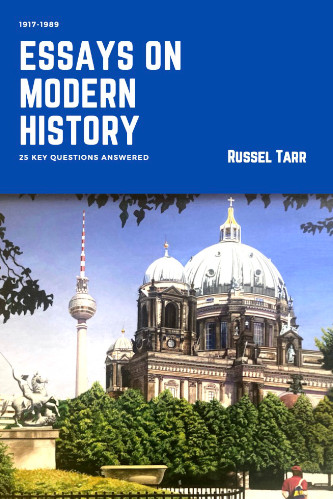Overview and introduction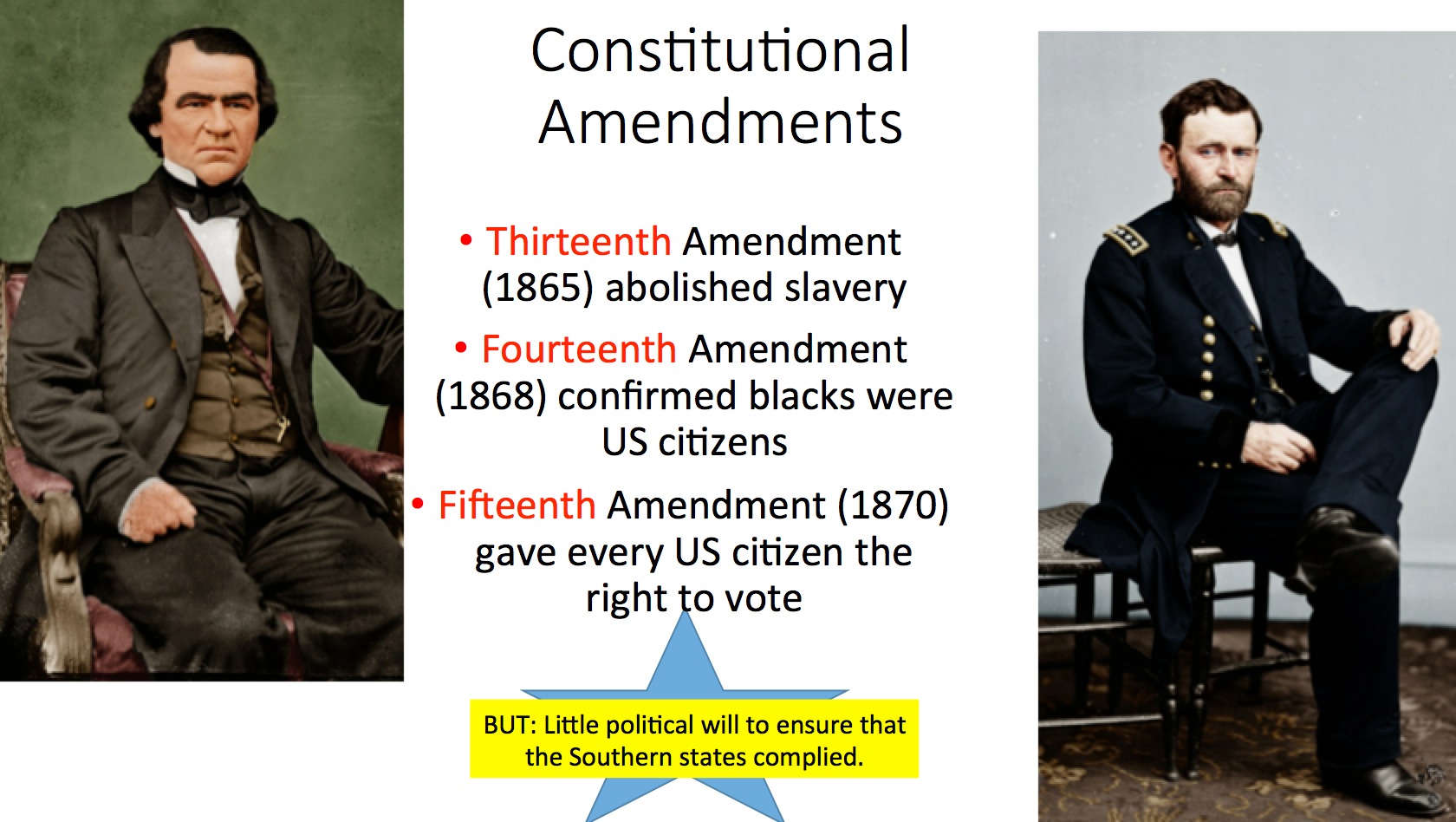
An overview of the syllabus
This prescribed subject focuses on struggles for rights and freedoms in the mid-20th century. The first case study explores the civil rights movement in the US between 1954 and the passing of the Voting Rights Act in 1965. This worksheet provides students with an overview and encourages them to develop their own timeline and list of key terms.
The Big Picture: A multimedia presentation of race in American history since the Declaration of Independence
This online presentation gives a big sweep of history and is designed to accompany the worksheet provided above.
Factual Test based on the lecture
15 questions testing student understanding from the lecture above.
Nature and characteristics of discrimination
Jim Crow and the Ku Klux Klan
Even though the Civil War brought an end to slavery, it did not bring political and social equality for black Americans. In the South, where most African Americans lived, African Americans were then forced into a position of second-class status by local "Black Codes" embodied in the Jim Crow laws. This discrimination was supplemented by the use of terror and intimidation such as the Ku Klux Klan.
Extension: Analysing a range of Jim Crow Laws
"Use the following Jim Crow laws to construct a diary account outlining the ways in which you, as a black American, have broken several of these laws in the space of just a day or two. Describe how it made you feel and how (or if) you decided to resist, and why. Alternatively, produce a classroom display resource designed to highlight a range of these laws (categorised as appropriate and including images), prioritise a selection of them in a 'Diamond 9' diagram, or even design a board game to educate players about the injustices of Jim Crow".
Sourcework: Which organisation produced this document?
Students are provided with a series of extracts by and about a particular organisation associated with civil rights. Can they guess its provenance?
The beginnings of the civil rights movement
World War Two and the Presidency of Truman
Some essential points of information regarding a number of mid-term and short-term factors which cover the period of World War Two and its aftermath, with suggested research tasks.
Emmett Till | Online presentation
A series of questions about the shocking murder of a black teenager which helped galvanise the civil rights movement.
The Montgomery Bus Boycott
Students learn about this famous event, sparked off by the protest of Rosa Parks, and use it to consider such questions as "What is the difference between law and justice? Under what circumstances do we have the right, or even the duty, to stand up against unjust laws and regulations? What forms can our resistance take? What are the advantages and drawbacks of each?"
Paper 1 Sourcework Exercise: To what extent was Martin Luther King responsible for the success of the Montgomery Bus Boycott? | Model Answers
A one-hour sourcework paper in the style of the IBO.
1. a) According to Source A, why did Rosa Parks refuse to give up her bus seat? [3 marks]
1. b) What message is conveyed by Source C? [2 marks]
2. With reference to its origin, purpose and content, analyze the value and limitations of Source B for a historian studying the methods used in the bus boycott. [4 marks]
3. Compare and contrast what Sources C and D reveal about the reasons why the Montgomery Bus Boycott succeeded. [6 marks]
4. "The contribution of Martin Luther King was the decisive factor in the success of the Montgomery Bus Boycott". Using the sources and your own knowledge, evaluate the validity of this statement. [9 marks]
Paper 1 Sourcework Exercise: Assess the significance of the Montgomery Bus Boycott | Sample Answers
A one-hour sourcework paper in the style of the IBO.
Sourcework: A memo from Bayard Rustin to Martin Luther King
Students are asked read a memo by Bayard Rustin about the success of the Montgomery Bus Boycott, then list at least six of the reasons that he gives to explain why it worked.
Segregation and education
The school desegregation campaign: overview
This worksheet breaks into three key sections: [1] The Supreme Court and Chief Justice Earl Warren; [2] Autherine Lucy and the University of Alabama; [3] What was the South so afraid of (a picture-based sourcework investigation).
Case studies: Elizabeth Eckford, Dorothy Counts and Ruby Bridges
As well as a focus on the Little Rock Nine, this activity also encourages students to consider the case of Dorothy Counts (1957) and Ruby Bridges (1960)
The university desegregation campaign
This worksheet considers the campaign of James Meredith to join the "Ole Miss".
Nonviolent protests
Sit-Ins and the Freedom Rides
This activity is based around the episode from the "Eyes on the Prize" entitled "Ain't Scared of Your Jails". You can obtain the documentary on DVD from Amazon.com here.
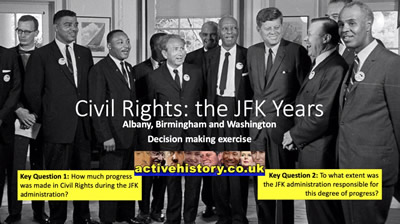 Albany, Birmingham and the Washington March - Multimedia decision-making exercise [interactive]
Albany, Birmingham and the Washington March - Multimedia decision-making exercise [interactive]
This teacher-led lecture guides students through the key dilemmas facing the likes of MLK and JFK in this critical period, and comes complete with video clips. Students then have to consdider how they would structure a response to the following essay question: "During the Kennedy administration, there was little progress in civil rights, and Kennedy himself was primarily to blame for this" - Discuss.
Mid-unit factual test
25 factual questions and a further 5 picture questions, complete with teacher answers.
Legislative changes
Campaign 1964: Freedom Summer | Teacher notes
"The 1964 Freedom Summer was a 10-week campaign in Mississippi designed to increase the amount of black people registered to vote...Listen to (or read) Fanie Lou Hamer’s “I Question America” speech and make notes on the sorts of injustices she and her people have suffered already and which she uses as compelling evidence to justify the MFDP being fully and properly recognised and respected...Produce a diagram/infographic designed to summarise the essential features of the Freedom Summer as reflected in the information shared here. Imagine this as an end-of-chapter revision summary aid. Focus particularly on presenting the statistics in an interesting way"
Legislation 1964: The Civil Rights Act
The Civil Rights Act of 1964 is significant because it made the protection of civil rights the responsibility of the federal government, and removed the rights of individual states to make their own exceptions to these...Watch the video clip and make detailed notes on the main provisions of the Civil Rights Act (www.activehistory.co.uk/l/civilrightsact). Afterwards, convert your notes into an answer of no more than 100 words to answer "What were the main provisions of the Civil Rights Act?"
Sourcework Assignment with model answers: The Civil Rights Act of 1964 [Teacher password required]
A complete sourcework paper in the style of the new IB Syllabus, complete with model answers by the author of this website.
Campaign 1965: Selma - The Simulation [interactive]
"In this simulation you will learn about key figures involved in the struggle as events unfold step-by-step. For each character you will be invited to step inside their shoes and consider how you should react to the situation you face if your objective is to attract favourable media attention that will help get a Voting Rights Bill through Congress. In this way you will form a judgement about how each character helped or hindered the success of the campaign (deliberately or inadvertently!) and which people were most significant in the struggle"
Legislation 1965: The Voting Rights Act
"The Voting Rights Act has recently been undermined by the case of Shelby County v. Holder (2013). Conduct some research into this case (including the article from The Guardian entitled ‘Selma leaders lament voting rights losses at congressional award ceremony’) to answer the question “To what extent has the long-term impact of the Voting Rights Act been undermined by recent events?"
Comprehensive Summary Sheet for Revision: The Civil Rights Movement to 1965
A thorough and essential revision aid over several pages.
Suggested tasks:
People: Decide upon the most important individuals in the civil rights movement (highlighted in yellow). Divide these between the class to research further, then conduct a classroom balloon debate to determine the overall winner. Alternatively create a Decision Tree to help students decide "Which Civil Rights figure are YOU?".
Places: Highlight all the places mentioned in this timeline. Use them to produce a Google Earth Tour of the civil rights movement, or produce a series of Historical Tripadvisor reviews.
Events: Produce a Living Graph to measure the achievements and failures of the Civil Rights movement over time.

Sample Sourcework Assignments and Model Answers
These materials are designed to provide teachers and students with practice sourcework exercises for the "Rights and Protest" topic in the IB History examination.
Click here for a fullscreen version
Podcast: US Civil Rights Struggle, c.1954-1965
The podcast outlines the African American Civil Rights Movement, focusing on the period up to 1965. The hosts detail the long-standing oppression of African Americans, from slavery to segregation, and the struggle for equality. Significant events, such as the Montgomery bus boycott and the Little Rock Nine, are examined alongside the roles of key organisations like the NAACP, SCLC, and SNCC. Presidential actions by Truman, Eisenhower, Kennedy, and Johnson, landmark Supreme Court cases like Brown v. Board of Education, and legislative milestones like the Civil Rights Act of 1964 and the Voting Rights Act of 1965 are also highlighted. The documents reveal both the successes and the limitations of these efforts in achieving meaningful change for African Americans, whilst also illustrating the significant tensions between differing civil rights groups.

© 1998-2026 Russel Tarr, ActiveHistory.co.uk Limited (Reg. 6111680)
1 Torrin Drive, Shrewsbury, Shropshire, SY3 6AW, England
Privacy Policy | Contact

